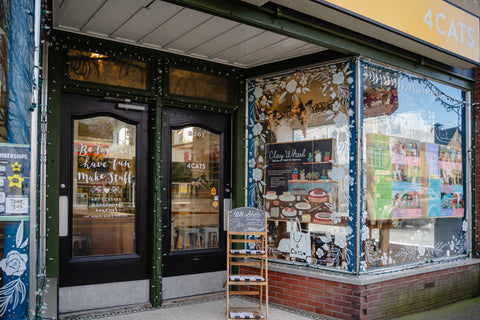
Hello Parents!
Just because it is summer doesn't mean we want our children's education to stop. Our children's minds are at a stage where they can easily absorb new information and have an innate love of learning. Let's make this most of this plastic period of the mind and open doors of potential interest.
We nurture this through interactive storytelling, art and art history. Diving into the incredibly interesting world of art history holds incredible value for your child's educational journey. Let's take a closer look at why it's so important for our budding Picassos and da Vincis to explore art history:
1. Connecting with Culture

Art history makes kids culturally smart! Art is like a time machine that takes us on a cultural adventure! When kids learn about art history, they get to peek into different time periods, ancient civilizations, and the fascinating beliefs and values of people from around the globe. It's like embarking on a journey to discover diverse cultures, fostering an appreciation and respect for the beautiful tapestry of humanity.
2. Building Visual Literacy

Learn to express themselves! Just as we learn to read and write, developing visual literacy is key for our young artists. Art history exposes them to artistic styles, techniques, and symbols. It's like giving them a special decoder ring to interpret and understand visual information. Armed with this skill, they can express themselves like artful wordsmiths and communicate ideas through the captivating language of visuals.
3. Inspiring Creativity

Art history inspires us! Art history is like a bottomless well of inspiration for our young artistic souls. By studying the works of master artists, kids get to uncover an entire palette of creative possibilities. They'll discover different artistic approaches, nifty techniques, and styles that make their hearts skip a beat. It's an invitation to let their imagination run wild, encouraging them to sprinkle a dash of Van Gogh here, a splash of Monet there, and create their own masterpiece mash-ups.
4. Developing Critical Thinking

Students learn how to question and see connections. Art history invites our mini art connoisseurs to put on their thinking caps and dive into the depths of artistic analysis. They'll learn to ponder and interpret artworks, asking questions like "What was the artist trying to say”. It's like giving their brain muscles a good workout, fostering critical thinking skills, and empowering them to form thoughtful opinions about the world of art.
5. Encouraging Historical Understanding

We tell stories at the level of the child! History can sometimes seem like a dusty old textbook, but we bring art history brings it to life in full colour! By exploring artworks from different eras, children get a front-row seat to historical events, social movements, and the cultural shifts that shaped our world. It's like witnessing history unfold through the eyes of artists who captured those magical moments. This enriches their understanding of the past and helps them connect the dots between art and the world around them.
6. Cultivating Aesthetics and Taste

Learn how to know and acknowledge beauty. Prepare to raise the curtains on your child's aesthetic senses! Art history helps them develop an eye for beauty and a refined taste for artistic excellence. As they study various art movements and their distinct characteristics, they'll learn to spot the ingredients that make art truly captivating. It's like giving them the secret recipe to appreciate elements like composition, colour theory, and craftsmanship. They'll become art critics in the making, delighting in the wonders of the visual world.
7. Empowering Artistic Identity

Students learn the importance of differences and being yourself. Art history introduces our budding artists to a parade of inspirational figures who have shaped the art world. They'll meet visionary creators who faced triumphs and tribulations, weaving their artistic magic through the ages. By learning about these incredible artists, children begin to see themselves as part of this rich tapestry. They'll gain confidence, embrace their unique abilities, and dream big about their own artistic potential.
In a nutshell, art history is a gateway to a world of wonders. It opens doors to understanding, sparks creativity, nurtures critical thinking, and ignites a fiery passion for art.



